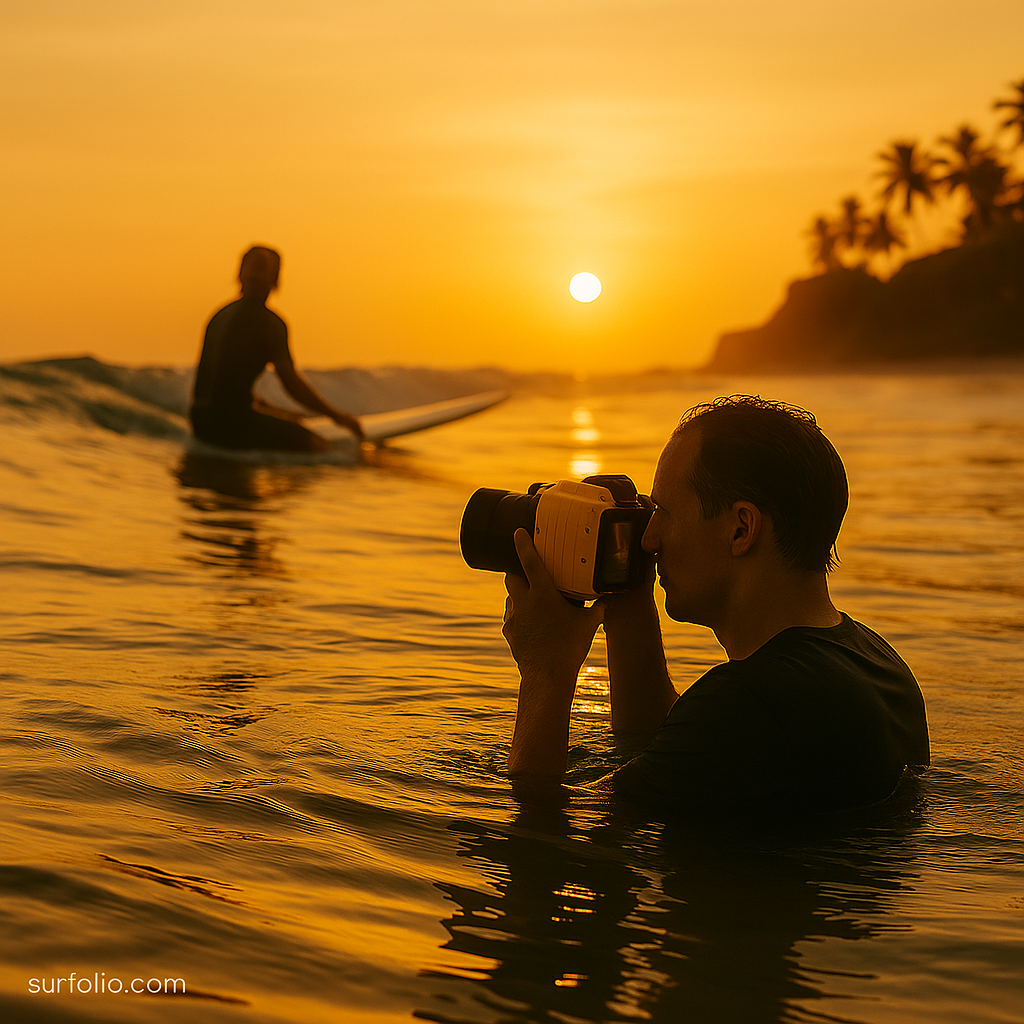
There’s something magical about capturing the perfect moment—a surfer slicing through a glassy wave as sunlight filters through the lip. Surf photography is not just art; it’s a cultural documentation of our connection with the ocean. Yet, as cameras have become more accessible, so too have the questions surrounding ethics in surf photography, especially within crowded lineups.
Balancing creativity, respect, and safety is essential for maintaining harmony in the surf community.
Why Surf Photography Matters
Surf photography immortalizes moments that define surfing—grace, power, and connection with nature. From water photographers swimming inches away from the action to drone pilots shooting from above, every image tells part of surfing’s evolving story.
However, as technology blurs the line between professional and recreational photography, understanding what’s appropriate in shared surf zones has never been more important.
The Shared Space of the Lineup
The lineup isn’t just a place to catch waves—it’s a community space. Everyone out there, from long-time locals to visiting groms, shares a silent agreement about safety, respect, and flow. Introducing cameras into that mix—especially drones and close-range setups—can disrupt that delicate balance if not handled mindfully.
Key considerations for photographers:
- Spatial awareness: Stay out of surfers’ direct paths when shooting in the water.
- Rotation respect: Don’t interfere with someone’s wave priority for the sake of a shot.
- Equipment caution: Floating housings, fins, and drones can cause injury if misused.
Surf photography should blend into the rhythm of the session, not interrupt it.
Consent and Respect
When it comes to ethics, consent is everything. While public beaches technically allow for open photography, there’s a difference between what’s legal and what’s respectful.
- Ask before publishing close-ups: Especially if surfers are easily identifiable.
- Avoid misrepresentation: Don’t frame images in misleading ways that distort the event or the person’s style.
- Honor privacy: Surfers often treat the lineup as a meditative space—be sensitive to that.
Remember, sharing someone’s image without context can alter reputations or cause unwanted attention.
The Rise of Drone Photography
Drones have transformed surf imagery, offering breathtaking aerial perspectives. But they also introduce noise, privacy concerns, and safety hazards.
To use drones responsibly:
- Keep a safe height—at least 30 meters above the surf zone.
- Avoid hovering directly overhead of surfers or swimmers.
- Respect local regulations—some beaches ban drones entirely.
- Be mindful of wildlife—especially seabirds that may view drones as threats.
A respectful drone operator can still capture stunning footage while preserving the peaceful nature of the surf zone.
Water Photographers: The Unseen Athletes
Photographers who shoot from the water share the same dangers as surfers—currents, reef, and impact zones. Their presence is welcome when they read the lineup and communicate clearly.
Best practices include:
- Making eye contact before swimming into a wave’s path.
- Wearing bright swim caps or vests for visibility.
- Never crowding the takeoff zone unless prearranged with surfers.
- Avoiding touching or pushing surfboards to get “the shot.”
Good surf photographers move like surfers—flowing, aware, and unobtrusive.
Surf Culture and Ownership of Images
The culture of surf photography is built on trust. Many professional photographers have lifelong relationships with the surfers they shoot—relationships grounded in respect, collaboration, and shared love for the craft.
Unfortunately, the rise of social media has fueled uncredited reposting and unauthorized use of images. To maintain ethical integrity:
- Always credit the photographer.
- Seek permission before commercial use.
- Avoid reposting content without proper tags or acknowledgment.
Respect for creative ownership strengthens the entire surf community.
Balancing Art and Awareness
Surf photography exists at the intersection of art, documentation, and community. It can showcase the ocean’s beauty while raising awareness about conservation, local culture, and human connection to nature.
But it only remains positive when done responsibly—when the camera doesn’t take precedence over respect for others in the water.
Final Thoughts
Great surf photography isn’t just about stunning visuals—it’s about capturing the soul of surfing without disturbing it. The ocean rewards awareness, flow, and humility, and those same principles should guide anyone shooting within the lineup.
Whether you’re a seasoned professional or a newcomer with a GoPro, remember: the best surf shots come not from dominating the space, but from blending into it.
